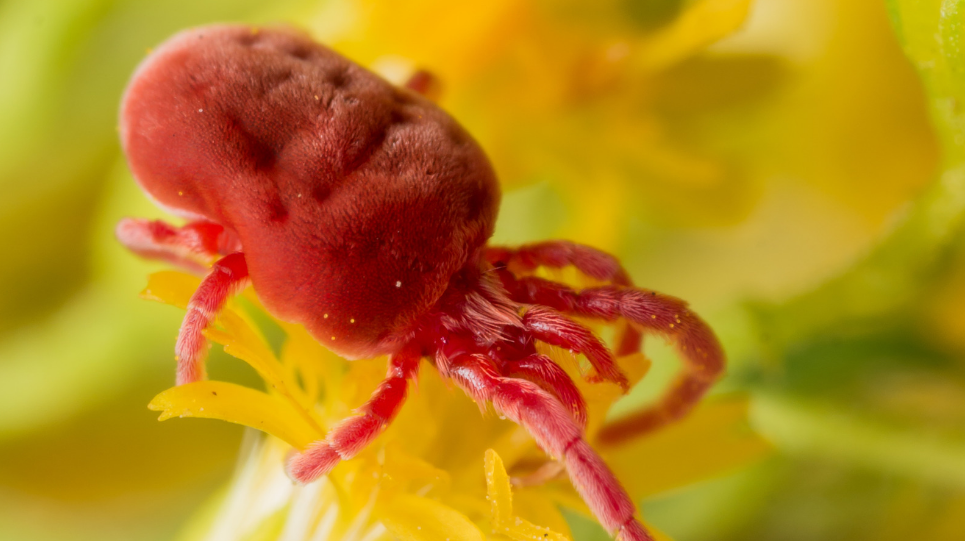Table of Contents
Spider mites – What are they?
 With a large infestation, they can even kill a plant. They attack the underside of leaves and sap the energy from the plant. Taking action as soon as you detect an infestation is the best way to get rid of them! Spider mites are sap-sucking plant pests in the class Arachnida. If you have an infestation of spider mites, you can use chemical or biological control methods. It’s better to hire pest control professionals to get rid of the Spider mites.
With a large infestation, they can even kill a plant. They attack the underside of leaves and sap the energy from the plant. Taking action as soon as you detect an infestation is the best way to get rid of them! Spider mites are sap-sucking plant pests in the class Arachnida. If you have an infestation of spider mites, you can use chemical or biological control methods. It’s better to hire pest control professionals to get rid of the Spider mites.
How to identify them?
 Take a look at the surface of the leaves – It is possible that the leaves of your plant have yellow blotches if it is actually infested with spider mites. You may notice a silvered look or even streaks of bronze or silver on the leaves when the light falls on them.
Take a look at the surface of the leaves – It is possible that the leaves of your plant have yellow blotches if it is actually infested with spider mites. You may notice a silvered look or even streaks of bronze or silver on the leaves when the light falls on them.
- The leaves may be covered in white webbing – The presence of spider mites can be determined by this. Clusters of webbing usually occur around feeding areas. Spider mite webbing isn’t produced by all species.
- Check for spider mites – It is difficult to see spider mites because of their small size. One method, however, is to place a white sheet of paper under the plant suspected of being infested and lightly shake one of the leaves to confirm their presence.
- Certain plants need special attention – Some plants seem to attract spider mites more than others. Pay special attention to the possibility of infestations on miniature roses, fruit trees, bananas, potted begonias, beans, mint, broad-leafed weeds, strawberries, frangipani, and indoor houseplants. Over 100 different plant species have been known to be infested by two-spotted spider mites.
- Pay attention to the weather when it is dry and dusty – The most damage is caused by spider mites in these conditions, as they are thirsty and seeking water from the leaves of the plant. Furthermore, everything under glass, including plants inside on your windowsills, is very attractive to them.
Experts Advice to eliminate Red Spider Mites
How to remove them using biological methods?

- Dispose of the diseased plant parts as soon as possible – You should pick up fallen leaves and remove any severely damaged leaves from the plant. By doing so, you will prevent mites from spreading to nearby plants. Place the leaves in a sealed plastic bag and dispose of them in the trash and a rubbish collection team will collect the wastes.
- Keep indoor houseplants clean by wiping them regularly – As this method can be relatively easy for a householder to use, it can be a great non-toxic method for removing spider mites from indoor plants.
- Make use of plant-based miticides – In the commercial market, there are a number of miticides that kill the spider mites using natural ingredients while leaving the plant and all other insects unharmed.
- Make sure outdoor plants are sprayed with a hose – Your outdoor hose can be equipped with a spray nozzle that can be used to water any plants that are infested. Water should be sprayed at high pressure and the underside of leaves should be targeted. This should get rid of spider mites.
- Prepare a homemade herbal tea – A quart of water can be combined with two tablespoons of Italian seasoning, a tablespoon of cinnamon and a tablespoon of ground cloves to make your own miticide.
- Make your own organic salt – It is possible to abrade mite bodies with fatty acids or potassium salts. You should apply these late afternoons so that the wetness remains on the plants as long as possible so it can reach the mites.
- Remove weeds around the plants – Plants that you actually want to grow in your garden shouldn’t be a target for mites who are seeking shelter and a launchpad for attacks.
- Ladybugs and other insects that prey on spider mites should be encouraged – Ladybugs, lacewing larvae, and predacious tripe can decimate spider mite populations if allowed to stay in your garden. However, pesticides kill spider mites’ natural predators, which is one of the main reasons spider mite populations develop. Consequently, you should not use pesticides like carbaryl, malathion, and imidacloprid.
How to remove them using chemicals?
- Apply rubbing alcohol – In the absence of spider mites, isopropyl rubbing alcohol will be effective. The underside of the infested plant’s leaves can easily be cleaned with rubbing alcohol and a clean cloth.
- Obtain a proprietary product that is suitable for outdoor spider mites – You can purchase wipes or sprays from garden centres or hardware stores. Read the instructions carefully before using.
- Get rid of the mites with liquid sulphur – Spider mites can also be eradicated by spraying liquid sulphur. Powdered sulphur should never be used since it can be inhaled by you or others after getting into the air. Spraying liquid sulphur within 30 days of using oil on your plants or in temperatures above 90 degrees Fahrenheit is not recommended.



